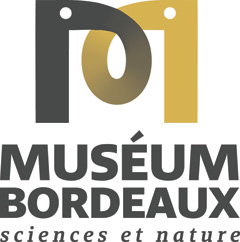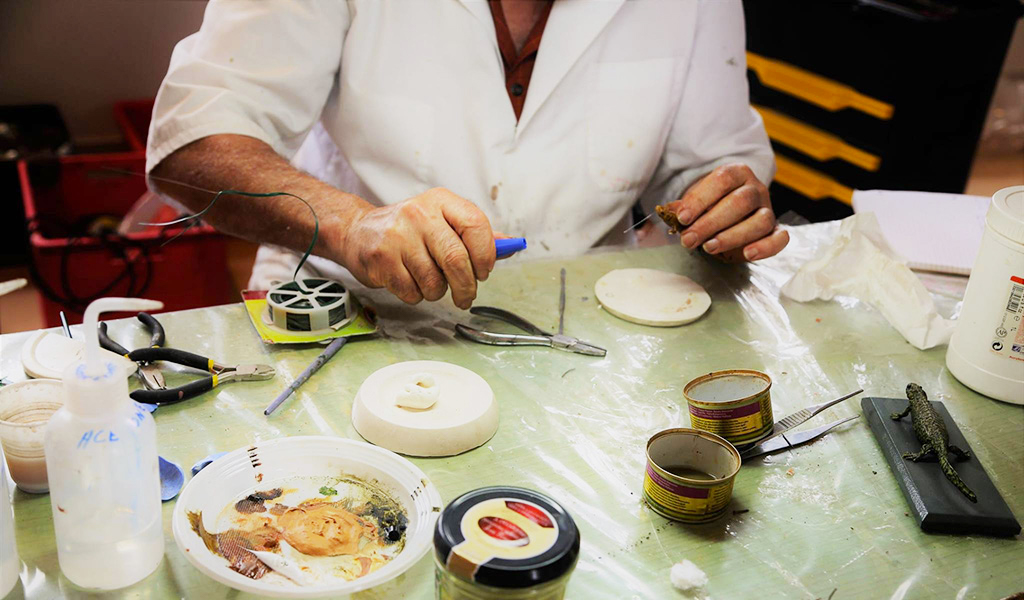
Preventative conservation, which enables collection deterioration to be slowed down, unfortunately does not always prevent deterioration of certain specimens which is an inevitable process. The wear of time or unfavourable conditions can make shortcomings, cracks or rips in the tanned skins and furs or feathers of specimens appear.
Restoration of a damaged specimen consists in stabilising and reconstructing the object with original or new materials if needed.
It can be oriented according to two types of objectives: either only stabilising and stopping deteriorations or a more advanced intervention, looking to find the functional and original visual qualities in view of presenting the specimen to the public. The restoration must be reversible and therefore allow the specimen to be returned to its state before it was restored.
Since the 2002 law museums, any restoration of an object in the “Musée de France” collection must be subject to an opportunity file submitted to a regional scientific commission. This includes a statement of the state before an intervention. The restorer must provide a report detailing the processes and materials used in the intervention.
The stages of a restoration
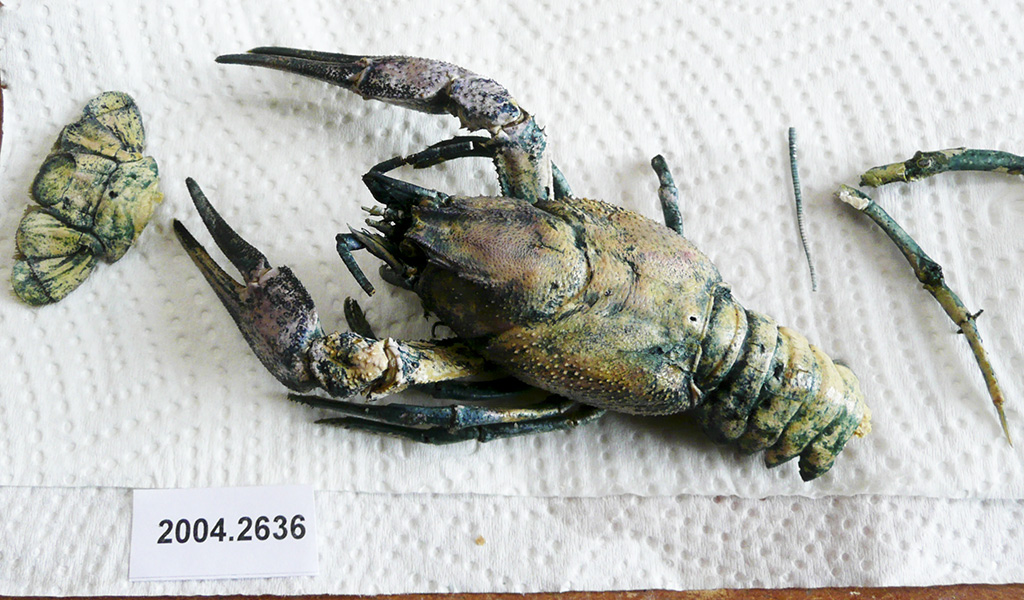
This Galician crayfish (Astacus leptodactylus) specimen, which has a broken tail and legs is a good example of damage that specimens in collections can suffer.
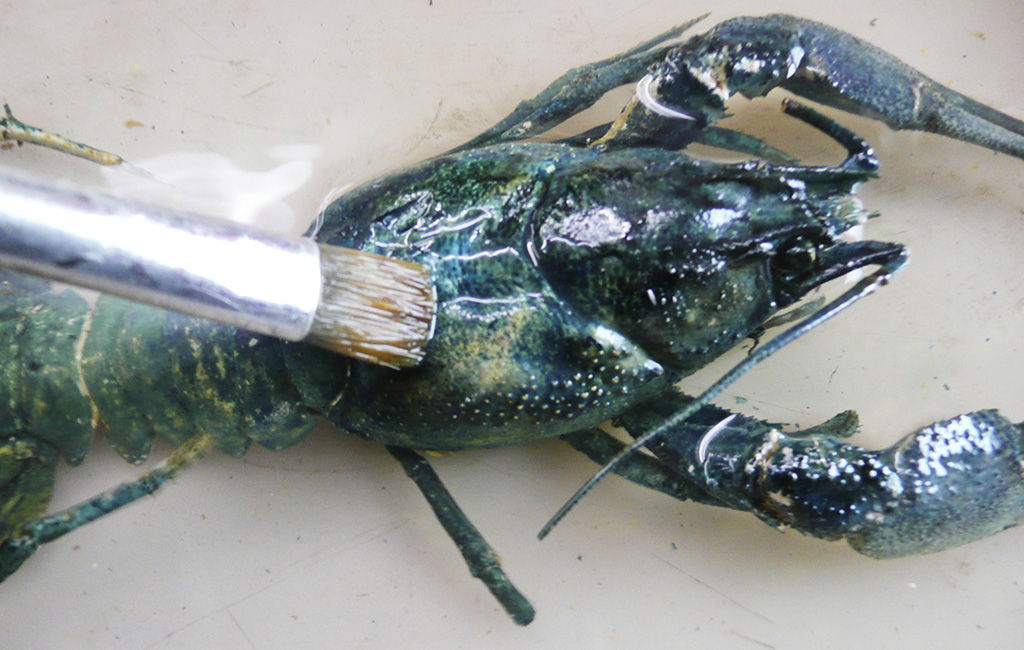
During its restoration, this specimen has been glued back together and protected by a coating in order to fix the broken parts. Its colour has also been readjusted.
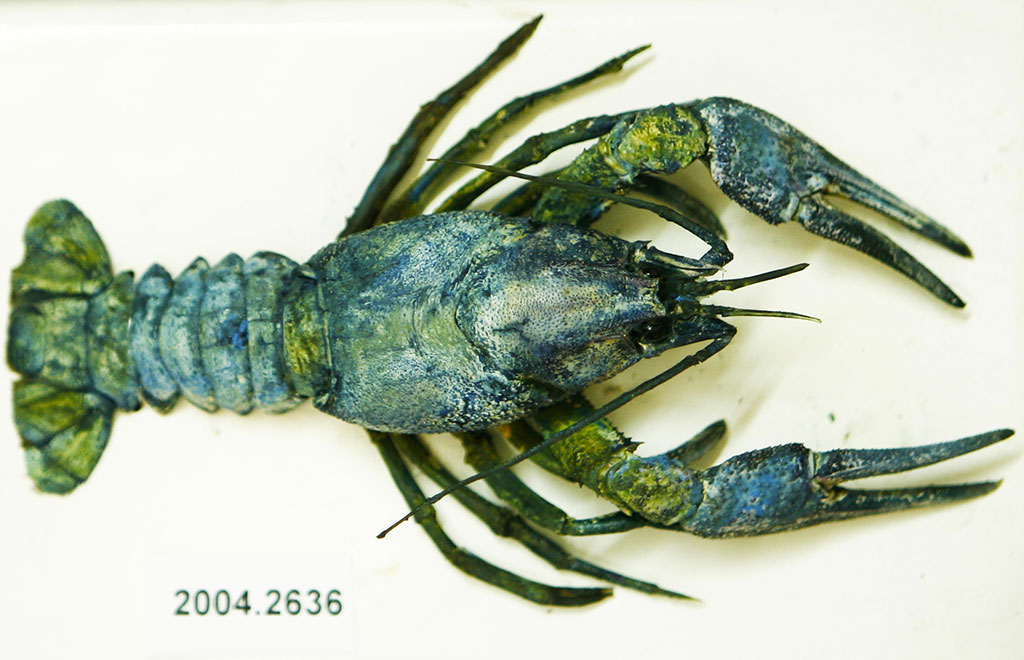
Thanks to this intervention, this specimen has regained its original appearance. It was then attached to its support. This restoration will be tracked in the database that makes up the inventory.
Yves Walter restores many specimens
See “Doctor Walter” in the video of a Fantastic team!
